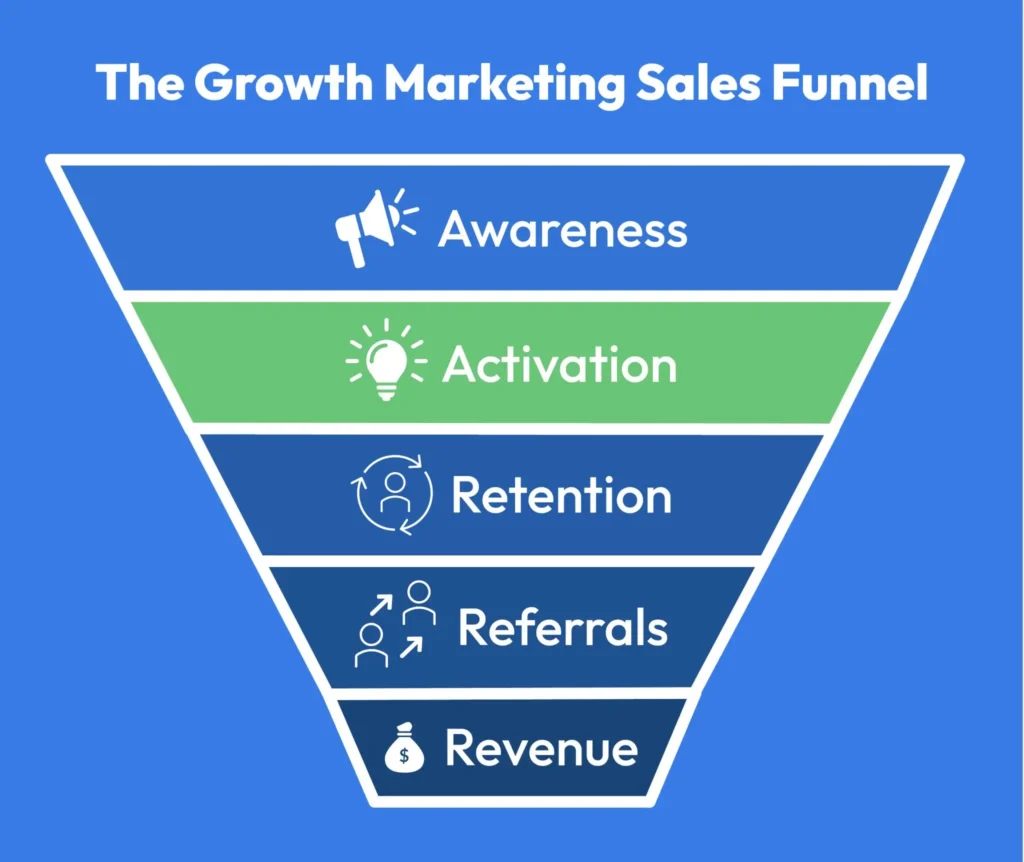If you’re pursuing a growth marketing strategy, you are playing the long game — building trust with your audience and truly working to meet their needs. But now that your lead generation strategies have brought you an interested audience, you need to “activate” those prospects to become loyal customers. Activation is the a-ha moment in the sales cycle where your leads connect the dots between their needs and your products or services — and they take action.

These seven lead conversion strategies are a starting point to help you hone in on the tactics and messaging that resonate best with your audience. Test and adapt them to create a frictionless process that activates your prospects to become new customers.
Streamline Conversions with a Buyer-Centric Website
Many buyers today expect to be able to conduct their own research on products and services without having to contact a business directly, so easy online access to relevant information (such as pricing or services pages) is an important part of purchasing decisions. You’ve done a lot of work to get potential customers to your website. But if they can’t quickly find the information they need to know before purchasing or signing up, you risk losing them out of frustration.
Pay close attention to the questions your customers ask in support tickets or over the phone, so you can resolve any points of confusion for the next visitor who comes to your site. You can also use heatmaps to observe users’ behavior patterns. This data provides the details you need to remove points of friction and streamline the conversion process as much as possible.
Increase Landing Page Conversion Rates with Meaningful Calls to Action
Optimize your website for conversions with clear, easy-to-follow action steps that encourage prospective customers to move forward in the sales process. Once your website visitors have all the information they need to purchase, they should be provided with a clear call to action that corresponds to their need. If this action step is hard to find or unclear, the added friction can easily lower lead conversion rates.
For example, many companies make the mistake of featuring too many different calls to action, or presenting vague next steps. For example, “Contact Us” is a popular CTA choice, but its broad language lacks persuasiveness and clarity. Try narrowing down next steps to the precise action you want your leads to take on each landing page: Should they book an appointment with your sales rep? Sign up for a free consultation? Register for a membership?
Ultimately, there are no right or wrong CTAs. The best choices will be the ones you have tested and adapted based on user behavior and high quality conversions.
Demonstrate Tangible Brand Value with Freebies
Potential clients may have a hard time envisioning your brand’s value if they don’t have a way of experiencing your products or services before committing to a purchase. Free samples are a practical way of introducing your interested leads to the product or service you know they’ll love once they try it.
Sampling isn’t limited to physical products, either. SaaS companies can offer software demos, service-based businesses can offer free consultations, and membership sites may offer free trials to encourage leads to purchase.
Take advantage of marketing tools that track conversions to measure the ROI on each initiative and ensure you’re investing resources in the leads who are most likely to convert. For example, audience segmentation allows you to target specific prospects based on user behavior or customized tags, while A/B testing can help you narrow down the right time to offer a free sample and the best message for convincing your lead to try it out.
Transitioning your business to a growth marketing approach? Visit our guide on 8 Foundational Strategies to Establish Your Growth Marketing Machine for more ideas!
Time Your Automated Sequences to Optimize for Conversions
Timing is one of the most common obstacles keeping leads from becoming customers. You may have nailed your message and perfected your customer profile, but you also need to make sure your customer activation campaigns are timed for conversion rate optimization.
Overly-frequent communications might make recipients feel bombarded. On the other hand, they may be confused about a sales pitch they receive long after they last interacted with your brand.
You should also be testing which event triggers catch your leads at the best time in the buying process to drive conversions. Does an abandoned-cart sequence perform higher than an upsell sequence? Offers that create a sense of urgency, like limited enrollment periods or last-minute deals, are particularly time-sensitive and need to capture your audience’s attention right when they need the additional incentive.
Use Customer Insights for Persuasive Messaging
Pay close attention to the language your customers use to describe their pain points as well as how your products or services help them. Support tickets, client interviews, and surveys of existing customers can be gold mines for finding the right language to convert leads. You may find that this information challenges your assumptions about who your audience is and what they find valuable about your brand.
Incorporate customer insights into your brand messaging through the language you use in your brand copy and the testimonials you choose to feature. And remember that these values will likely change over time as your business grows, so build regular customer feedback loops into your customer activation strategy.
Customize your Message with Retargeting Campaigns
What convinces one type of lead to convert may not work for another. To improve conversion rates, run retargeting campaigns with messaging geared toward distinct groups of leads. For example, segmenting email marketing subscribers based on past engagement lets you send curated follow-up content based on their specific interests and behaviors.
You will need to test different user segments to determine which factors influence conversion rates enough to benefit from customized messaging. These could include user behavior, lead source, and even device type.
Highly customized follow-up communications are great conversion opportunities because you can speak more specifically to your prospects’ needs rather than relying on a broad message to reach users who are in varying stages of the buyer journey.
Integrate Your Marketing Channels for Better Conversion Data
Every stage of a growth marketing plan is data-driven, but it’s particularly easy to see why data matters so much to successful customer activation. Activation focuses on what moves your audience from interested-but-undecided to eager-to-buy. This requires a clear picture of the non-linear buyer journey and sophisticated analysis.
For example, a lead may hear about your company thanks to a customer referral. Your services sound like the right fit for them, so they visit your website. Then they happily subscribe to your newsletter so they can get helpful information from you. Finally, they book an appointment after receiving relevant content that addresses their pain points. What caused the conversion? It’s hard to say, if you don’t have the whole picture.
Conventional marketing tactics rely on standard conversion metrics, such as purchases made from a promotional email or sales that occurred after users clicked on an ad. Businesses are encouraged to focus on these metrics for decision-making and invest in the channels with the most immediate performance. These numbers don’t tell the whole story, however, because they isolate the value of each independently-operated marketing channel.
All-in-one marketing software integrates marketing efforts into one platform so marketing teams can better observe how each channel, campaign, and message impacts the business’s long term conversions and growth plan.
Kartra’s all-in-one marketing software offers the full stack of tools you need to convert hesitant leads into eager customers.
About Kartra
This blog is brought to you by Kartra, the all-in-one online business platform that gives you every essential marketing and sales tool you need to grow your business profitably – from sales pages and product carts to membership sites, help desks, affiliate management and more. To learn how you can quickly and easily leverage Kartra to boost your bottom-line, please visit kartra.com.


